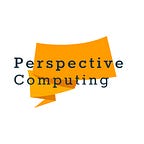Artificial Intelligence : The beginnings
Humans have always been fascinated — or should I say obsessed — with the idea of creating the most powerful computer. Though the term “artificial intelligence” was coined during 1956 the idea behind conscious robots had been around for centuries.
The artificially thinking human-like robots or machines were bought in by the classic philosophers and fiction writers. The myths and ancient scriptures suggest that Greeks had robots and Chinese, Egyptian engineers built automatons.
The main idea behind building systems that can think on their own is to understand the cognitive abilities of humans and replicate them for building a self-sustaining system. Describing human processes as a system of mechanical operations in the brain, made scientists build the first digitally programmable computer in 1940 and the same idea led them into thinking seriously about the possibilities of building an electronic brain that is self-conscious. Many philosophers, mathematicians, and research engineers were in a race to find out a way for establishing a measurement for robotic intelligence and form reasoning that enables the working of this principle.
Alan Turing, a British polymath, through his work of “Computing Machinery and Intelligence”, provided mathematical reasoning behind the way humans think. He also provided a measurement for testing the intelligence of created self-conscious beings called the Turing Test. The test is known as imitation game which included three entities: a human, a (human) judge, and a computer. When the judge poses a question through a terminal, the human and computer should try convincing the judge that they are human and if the judge fails to confidently identify the human then the computer wins.
Though the field offered a new vision for the technology and digital applications, funding for cognitive sciences was intermittent due to pressure from Congress and critiques, further years until 1956 were extremely difficult to keep the project running. This period came to be known as “AI winter”.
AI as a field was formally founded in 1956 at a conference at Dartmouth College, Hanover hosted by John Mcarthy and Marvin Minsky. Despite several repercussions, it ended with a positive note that AI can be achieved. This conference acted as a catalyst and ignited a spark in AI research for the next twenty years.
The machine learning algorithms were greatly improved along with the speed and storage of computer systems. Companies started working on prototypes and machines that could learn and become more efficient by the minute. One such invention was IBM’s Deep Blue which defeated Garry Kasparov, a grandmaster in chess. Further, an answering system, Watson, won a quiz show “jeopardy” and a chatbot Eugene Goostman captured headlines. The most recent invention that turned many heads in the AI community was Sophia, a social humanoid robot developed by Hong-Kong based company Hanson Robotics. More cool AI applications are google duplex and “This person does not exist”. Do visit the site of https://www.thispersondoesnotexist.com. The images of human faces created do not exist, but are life-like simulations run by AI.
The influx in research bought in fascinating creations and products that changed the way humans live by powering 60% of applications and machines we use, Though we have come a long way from digital computers to powering social humanoid robots that can think, the concept of AI is still befuddling. The future for Ai though abstruse, the potential for it being used for empowering lives is prodigious.
